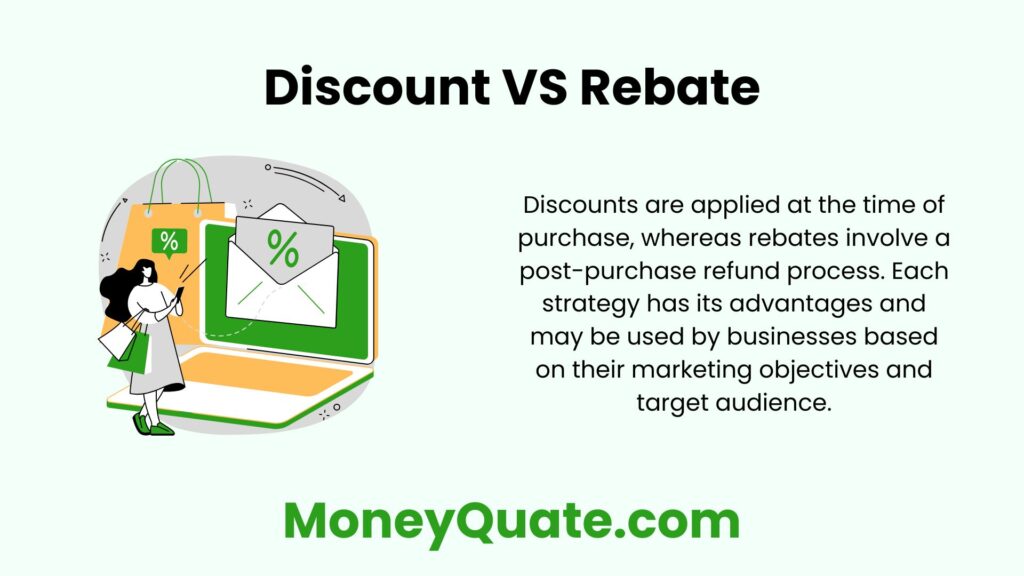When viewed from a business perspective, discounts and rebates serve as powerful tools to attract customers, increase sales, and boost profitability.
Let’s delve into how businesses leverage these strategies:

Contents
Discounts
Immediate Sales Boost
Offering discounts entices customers to make purchases on the spot, driving immediate sales.
Clearing Inventory
Discounts help businesses clear out excess inventory or outdated stock quickly, preventing losses due to obsolescence.
Customer Acquisition
Discounts can serve as an effective way to attract new customers to the business, especially if competitors are offering similar products or services.
Building Brand Loyalty
Regular discount offers can foster customer loyalty, encouraging repeat purchases and long-term relationships.
Promotional Campaigns
Discounts are often used as part of marketing campaigns to create buzz around new product launches or seasonal sales events.
Competitive Advantage
Offering competitive pricing through discounts allows businesses to stay ahead of rivals in a crowded marketplace.
Volume Sales
Businesses may offer bulk discounts to incentivize customers to buy larger quantities, driving higher sales volumes.
Customer Retention
Discounts can be used strategically to retain existing customers by rewarding their loyalty with special pricing incentives.
Upselling Opportunities
Discounts can be tied to upselling strategies, where customers are offered discounts on additional products or services when they make a purchase.
Brand Perception
Carefully managed discounts can enhance the brand’s image, positioning it as a customer-friendly and value-oriented.
Rebates
Post-Purchase Incentives
Rebates offer customers a refund or cashback after the purchase, encouraging them to buy without requiring an immediate price reduction.
Data Collection
Rebate programs often require customers to submit information, such as contact details and purchase receipts, providing businesses with valuable data for marketing and customer analysis.
Enhanced Profit Margins
Unlike upfront discounts, rebates allow businesses to maintain higher initial prices, preserving profit margins while still attracting customers with the promise of future savings.
Customer Engagement
Rebates can drive ongoing engagement as customers follow up on rebate submissions and track the status of their refunds, keeping the brand top of mind.
Conditional Offers
Businesses can use rebates to incentivize specific behaviors or purchases, such as buying complementary products or upgrading to premium versions.
Differentiation
Rebate offers can differentiate a product or service from competitors, especially if the rebate is for a unique feature or added value.
Encouraging Feedback
Rebate processes often involve customers providing feedback or reviews as part of the redemption process, offering valuable insights for product improvement or marketing.
Delayed Gratification
By offering rebates, businesses tap into the psychology of delayed gratification, encouraging customers to perceive the rebate as a bonus rather than an immediate discount.
Seasonal Promotions
Rebates can be strategically timed to coincide with seasonal buying trends or promotional periods, maximizing their impact on sales.
Customer Satisfaction
Successful rebate fulfillment enhances customer satisfaction, as customers feel rewarded for their purchase and trust the brand to fulfill its promises.
Summary
Overall, both discounts and rebates play essential roles in a business’s marketing and sales strategy, offering versatile tools to drive revenue growth, retain customers, and maintain a competitive edge in the market.